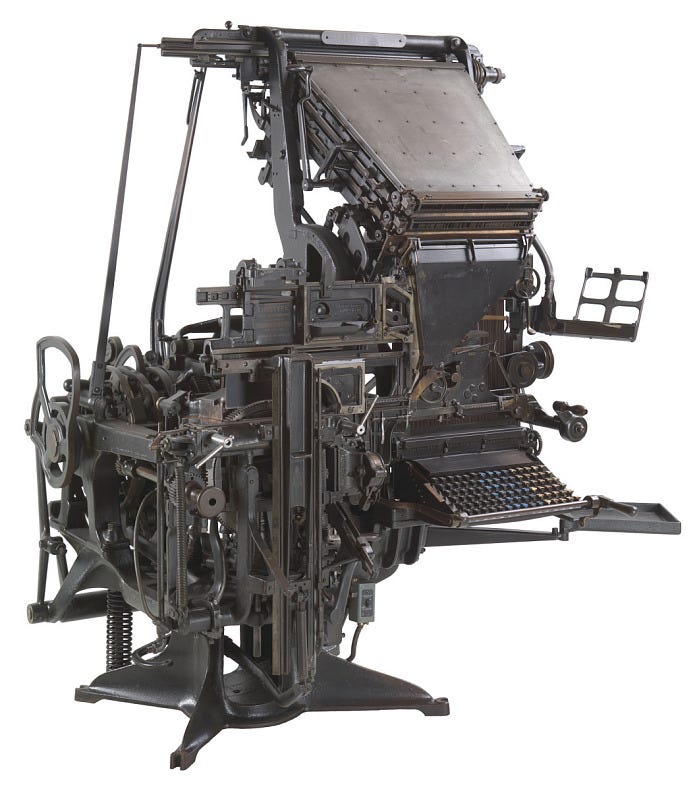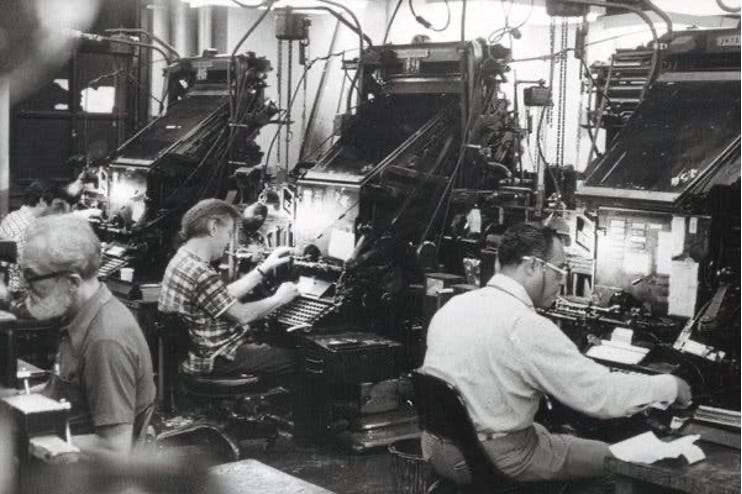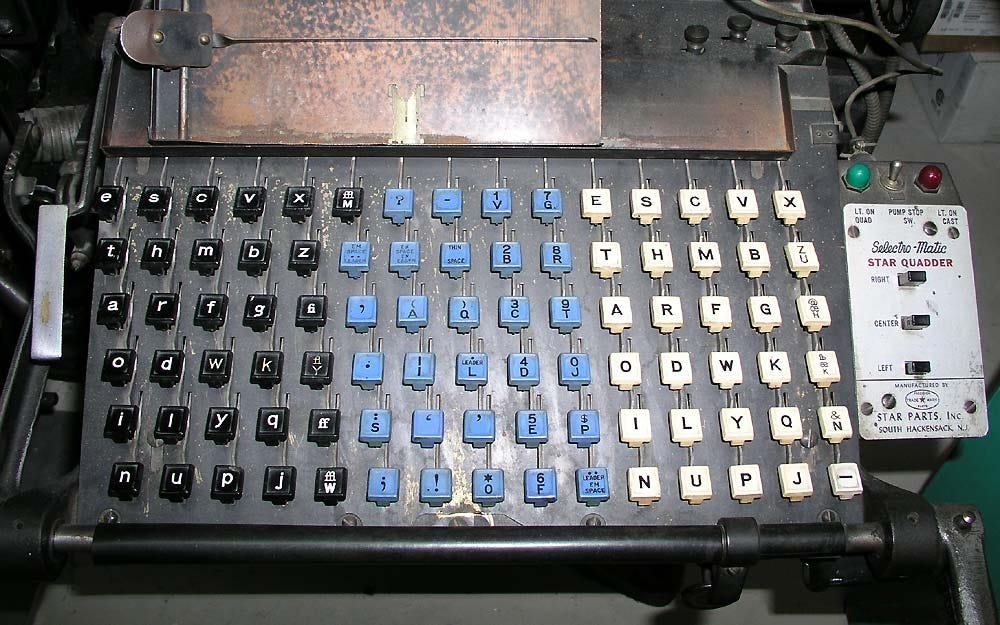Today, June 23rd, is National Typewriter Day. You are excused if it slipped your mind. After all, it is also National Porridge Day (quite revered in my house). The day acknowledges the 1868 US typewriter patent issued to Christopher Latham Sholes.
Typewriters are mostly collector items now. I have a 1947 “Silent Secretarial” Smith-Corona (“Made in Canada”!) and lament the loss of my 1975 Olivetti Lexikon.
However, we regularly use “type writers” of all …. types: computers, tablets, mobile phones, even ovens). My all-time favourite is the Linotype machine, so today I celebrate this “eighth wonder of the world.”
This is a Mergenthaler Linotype machine from the Smithsonian
The Linotype machine (created in 1884 by Ottmar Mergenthaler) is the technical bridge between handset type and phototypesetting. These behemoths can weigh up to 2,000 kg and stand 2.5 m tall. They were used extensively for printing books and magazines, but are best known for their use in newspaper production.
This picture shows Linotype operators composing type for the July 2, 1978 edition of the New York Times. The last edition printed with “hot type.” The photo come the from the June 2, 2016 New York Times story about the retirement of the last NYT Linotype operator: Rudolph Stocker.
Here’s how a Linotype machine works:
The operator types on the keyboard. Each time a key is pressed, a small metal mold called a matrix is released from a storage rack. These matrices have the shape of letters carved into them. The machine lines up all the matrices in a row—forming a line of text. Once the line is ready, hot molten metal is poured into the row of matrices. This creates a solid metal line (a “slug”) with raised letters. The slug cools quickly and is pushed out of the machine, ready for printing. After casting, the matrices are lifted and automatically sorted back into their correct places in the magazine, ready to be used again. The slugs are melted down to later create new slugs.
Loud, hot, complicated, and strange.
While the QWERTY keyboard was designed to avoid keys sticking together (not to slow typists down as the persistent myth suggests), and the Dvorak keyboard was designed to improve speed and ergonomics, what on earth was the Linotype keyboard designed for?
This is a typical Linotype keyboard with a wonderfully named add on, the “Selectro-Matic,” for type justification. Why this keyboard arrangement? Letter frequency, with the most used letters on the left.
The Linotype machine is an extraordinary invention and extraordinary too are the people who operated them. For a wonderful overview of both, I highly recommend Linotype: The Film: In Search of the Eighth Wonder of the World (2020).
Happy Typewriter Day.
…Mike








Linotype: The Film can now be watched on YouTube. Wonderful exploration of an amazing technological invention.